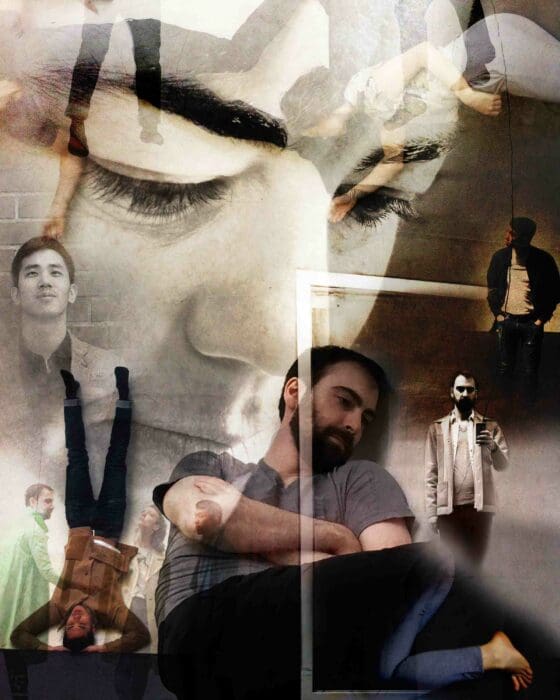 “Enter the space with brilliance, seeing every molecule floating…” so starts the beginning of each of three poems, written by Yvonne Ng to her dancers, providing each a score and map with which to develop a solo in their own movement voice. The three solos were then superimposed onto each other, encouraging the dancers into unplanned interactions and opportunities for choreographic decision-making. Yvonne Ng’s tiger princess dance projects world premiere of trio Zhong Xin (the “centre” or “heart”), renders a cool and eerily beautiful comment on isolation and connection. The method of working with each dancer privately to establish an individual dance vocabulary before bringing the three (Irvin Chow, Mairead Filgate, and Luke Garwood) together highlighted the tensions inherent to being in community with others while establishing self-identity—a theme in each of the evening’s double-bill performances.
“Enter the space with brilliance, seeing every molecule floating…” so starts the beginning of each of three poems, written by Yvonne Ng to her dancers, providing each a score and map with which to develop a solo in their own movement voice. The three solos were then superimposed onto each other, encouraging the dancers into unplanned interactions and opportunities for choreographic decision-making. Yvonne Ng’s tiger princess dance projects world premiere of trio Zhong Xin (the “centre” or “heart”), renders a cool and eerily beautiful comment on isolation and connection. The method of working with each dancer privately to establish an individual dance vocabulary before bringing the three (Irvin Chow, Mairead Filgate, and Luke Garwood) together highlighted the tensions inherent to being in community with others while establishing self-identity—a theme in each of the evening’s double-bill performances.
A single set piece (Joe Pagnan), an oversized shattered crystal-like sculpture that was suspended over the stage, reflected fragmented light around the minimally lit space (Arun Srinivasan), providing the piece with an otherworldly sensation of time itself being suspended. The work seemed to be experimenting with endurance, with scenes and interactions stretching long, the dancers taking the time to explore individual moments and interactions to their fullest capacity. Zhong Xin investigates the idea of dance being a contagion, moving from body to body and influencing one’s personal dance vocabulary―and to what end? How does the dancing body (and the interpreting dancer) realise a deep self-understanding while in community with (and influenced by) others?
The opening performance was created and performed by artistic director Ng. In Search of the Holy Chop Suey (world premier) asks similar questions regarding self-identity and the search for origin, and seemed a deeply personal response to the theme. Drawing on childhood memories and recent research in her family home (Singapore), Ng enters the stage wearing a shelter on her back. This cleverly designed structure (Silvie Varone) serves as companion, refuge, and a perfect frame for Ng’s embodiment of character, animal, and essence. There were truly stunning moments in this work, most memorable were the ways that Ng interacted and manipulated the shelter as it became an animate character supporting her in her quest for self-discovery. As each facet of the four sided structure was introduced to the audience, Ng transformed into a different character, shedding layers to reveal vulnerabilities as the piece evolved. It can be risky to rely so heavily on an external structure to articulate so much meaning in a dance piece, but in Holy Chop Suey the partnership between set and performer is flawless and beautifully executed.
